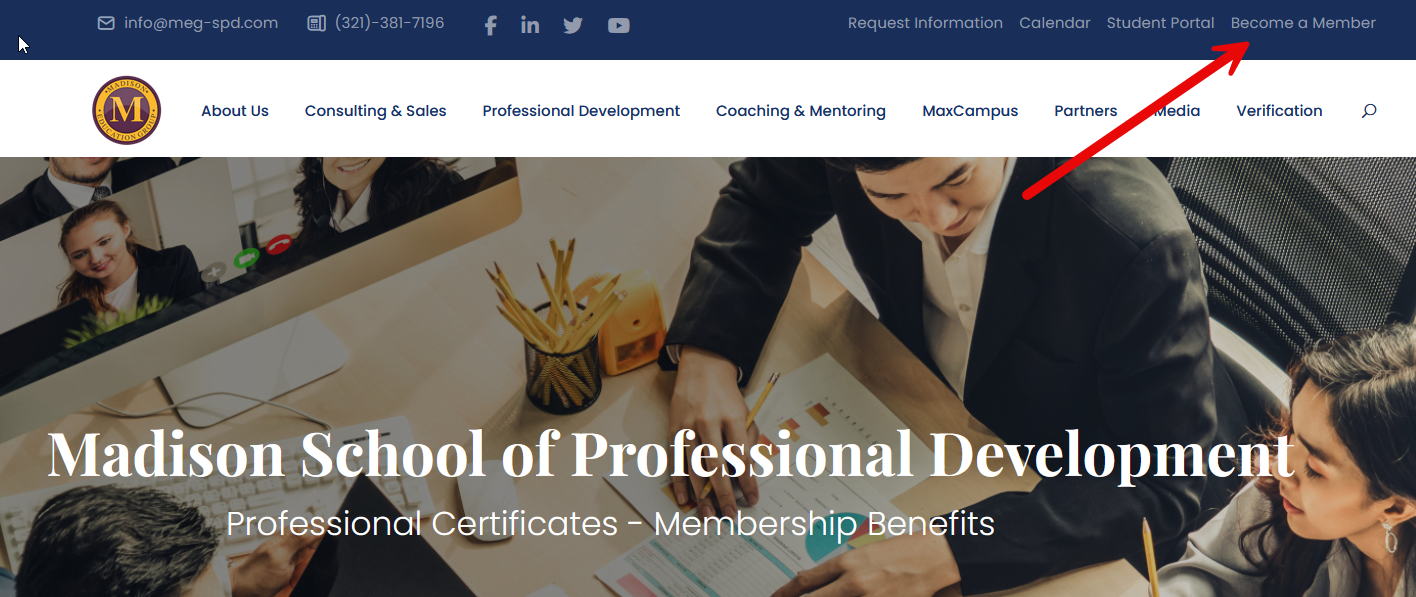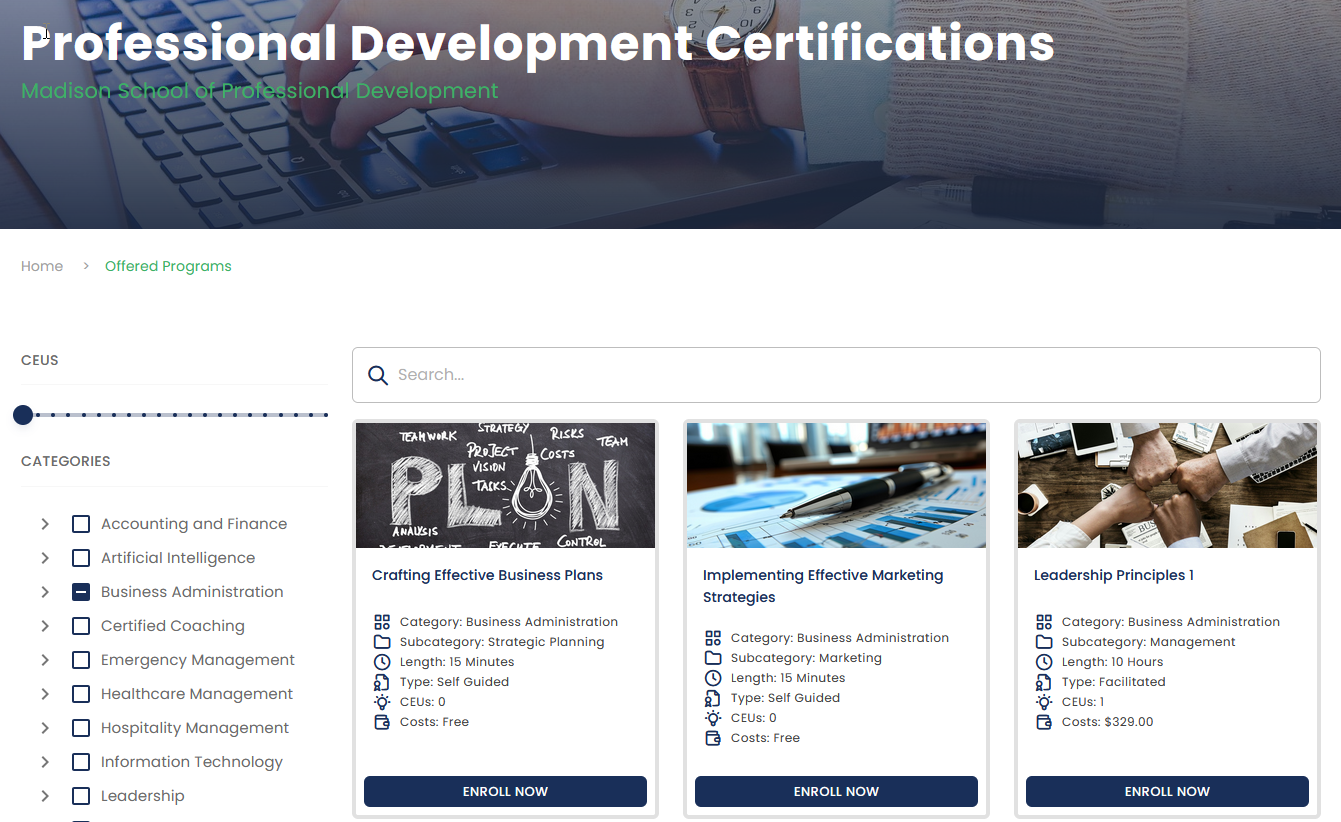Blog Posts
 April 30, 2025Characteristics of Visionary Leaders
April 30, 2025Characteristics of Visionary LeadersBy Dr. Scott
Welcome back to another edition of the Madison School of Professional Development Wednesday Leadership Blog. Each Wednesday, we explore leadership from a new perspective. If you have been reading along, you know we just finished up our 3 part series on Thinking About Leadership where we examined leadership theories, leadership styles, and leadership best practices.
This week, we start a new series. Our fulcrum over the next several weeks will be visionary leadership—what it is, how to become one, and best practices all around.
We’ll start by exploring the 6 characteristics of visionary leadership and also discuss how future mindsets and compelling visions are central to a visionary leader’s success.
6 Characteristics of Visionary Leadership
Before we can jump ahead to the 6 characteristics of visionary leadership, we first need to define visionary leadership. Like leadership, itself, definitions of visionary leadership are complex and no one definition fits all.
Visionary leadership, at it’s most basic level, is a style of leadership that emphasizes the attainment of a shared vision. It is the role of the leader to effectively communicate this vision and bring people together to achieve the vision—often in unique, innovative ways where flexibility, risk taking, and strong organizational cultures are the norm.
Visionary leadership requires this type of broad definition. In part, because visionary leaders and the organizations they build are often very different from one another, but the end result is the same—long term goal achievement and loyalty from a large pool of stakeholders.
What we can more easily define are the 6 most common characteristics of visionary leadership and visionary leaders. These are: vision, innovation, strategic thinking, effective communication, risk taking, and resiliency. To expand on this, we find that visionary leaders have
Vision: A clear vision and the ability to articulate the vision to a team
Innovation: A passion for innovation and thinking outside the box
Strategic Thinking: A strategic thinking mindset and long term goal achievement.
Effective Communication: A skill set steeped in effective and inspirational communication
Risk Taking: A willingness to take risks and try unorthodox approaches to solving problems
Resiliency: An ability demonstrate resiliency in the face of failures and setbacks
Future Mindsets and Compelling Visions
Visionary leaders must have, by definition, future mindsets. This means the ability to conceptualize and visualize a more efficient, more productive, more profitable future for an organization and then have the requisite education, training, and experience to lead the organization in the achievement of that future state.
It’s more than strategic planning, though this is of course an important element of visionary leadership. It’s more than goal achievement, but that’s important too. It’s more than innovation, but here again, visionary leaders need to innovate.
A future mindset is the sum of these and other forward thinking characteristics of visionary leadership. It is the driving force that inspires team members and encourages innovation and problem solving. It is the glue that holds together the organizational culture and the team “buy-in.” It is the motivator that reminds leaders to embrace failure and setbacks realign the focus of themselves and their organization back onto success and the achievement of the vision.
Future mindsets also help leaders connect the dots backwards from the desired future state and identify the path forward. This also allows visionary leaders to effectively communicate a compelling vision. If team members are not able to see the vision or understand the purpose for achieving the vision, those team members are less compelled to take on the challenges often associated with visionary leadership goals.
Compelling visions for an organization help inspire teams to achieve more than they otherwise would have. In the world of sport, underdogs often only have a chance if there is a clear plan—a vision—for overcoming a superior opponent. The same is true in business and in life. A clear, compelling vision for a shared future can motivate groups and teams to overcome great odds and succeed. Visionary leadership, and especially a future mindset, are often key components in these successes.
Final Thoughts
Our goal over this and the next few weeks is to explore visionary leadership in detail to set the stage for the professional development and best practices mastery that can help each of become more visionary in our leadership. This week, we focused on the 6 characteristics of visionary leaders and then explored the important concept of future mindsets and compelling visions. Next week, we’ll look at how visionary leaders strategically innovate and also inspire others through their communication.
If you have concepts or ideas you’d like to see me pontificate on, please pass them along to me at info@meg-spd.com. Thanks, and may all your leadership endeavors be rewarding.
Dr. Scott Eidson is the Executive Vice President of the Madison School of Professional Development and holds doctoral degrees in both history and business which he uses to educate occasionally, but mostly bore people at parties.
 May 04, 2025MSPD Launches New Membership Program
May 04, 2025MSPD Launches New Membership Program May 07, 2025Strategic Innovation and Inspirational Communication
May 07, 2025Strategic Innovation and Inspirational Communication May 12, 2025Launch of Free Success in Business Series
May 12, 2025Launch of Free Success in Business Series May 14, 2025Visionary Leadership and the Situation
May 14, 2025Visionary Leadership and the Situation May 21, 2025Visionary Leadership and Personality Traits
May 21, 2025Visionary Leadership and Personality Traits